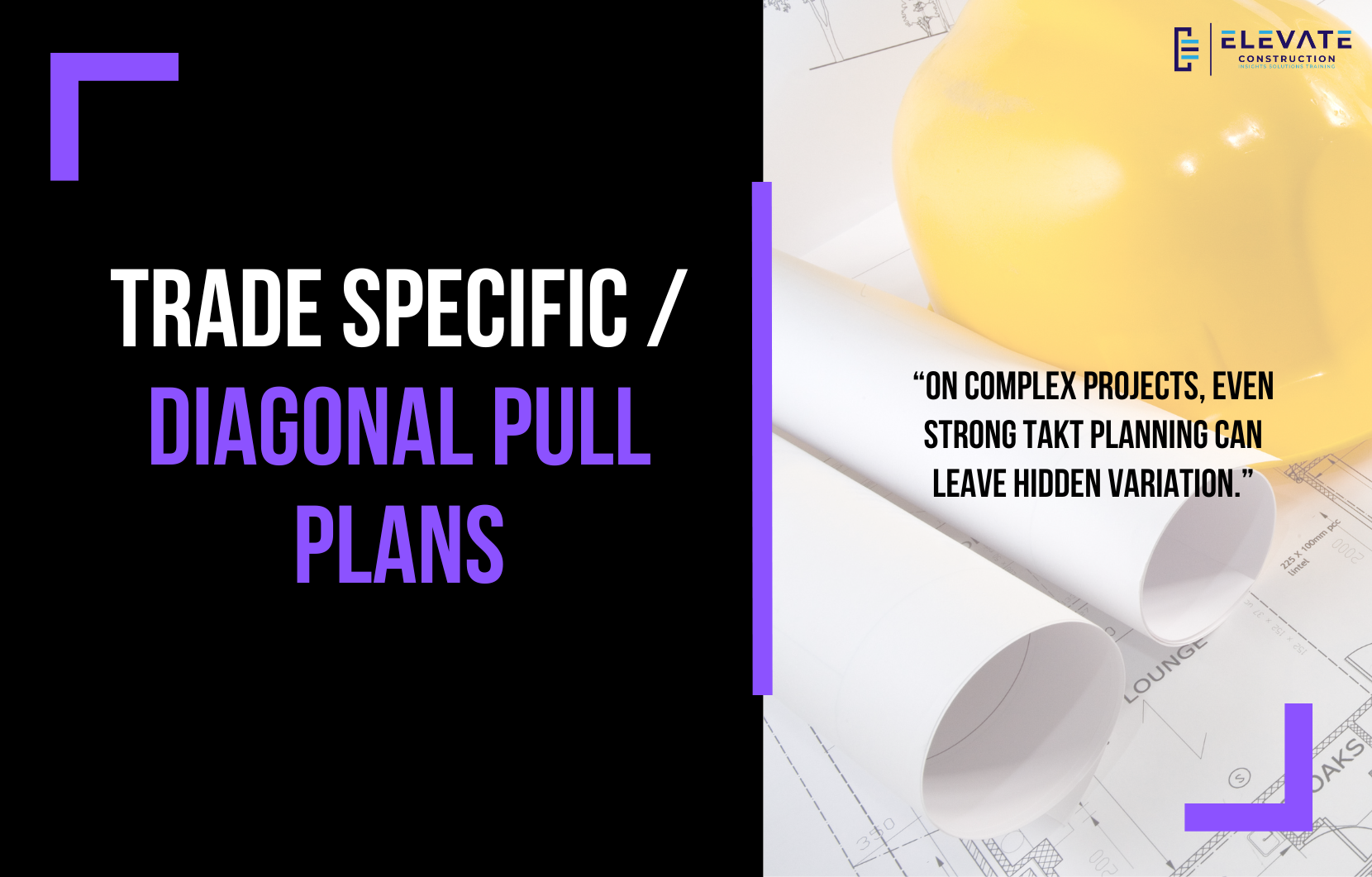A Smarter Way to Tackle Complex Projects
We do internal reviews of all the projects. Kevin and I often go through red lines and use touchscreen reviews. On one particularly complex project, despite having strong planning systems in place, the team was still experiencing variation that ate into buffers.
That challenge led us to create a new process that I believe is a game changer Trade Specific Pull Plans.
The Problem with Complex Projects
Some projects flow smoothly with straightforward TAKT plans. Interiors, exteriors, and phases move in sequence as expected. But on more complex projects, every zone looks different, every sequence is unique, and even the best multi train TAKT plans can’t fully eliminate variation.
The project team in this case had everything set up:
- Pull plans for each phase
- Zone maps
- Committed trade partners
- Weekly work planning and look-ahead sessions
Still, buffers were shrinking. That’s when it clicked maybe we needed to plan differently.
The Breakthrough: Planning by Trade, Not Just by Zone
Here’s the insight, instead of planning left to right across all trades in a zone, trace the flow of one trade across all zones.
- Identify the bottleneck trades: Which partners are experiencing the most variation?
- Gray out everything else: Keep focus on the critical trades first.
- Map trade by trade: Take one trade through each zone, one step at a time. Look at where work is light, dense, or complicated.
- Smooth the flow: Adjust durations or sequences where needed, either with the trade partner directly or within the overall phase plan.
- Coordinate overlaps: If multiple trades end up in the same zone, resolve conflicts during weekly tactical planning.
This method highlights nuances that get lost in traditional pull planning. By ironing out the sequence for each key trade, you reduce the variation that chips away at project buffers.
A New Type of Pull Plan
This approach isn’t your typical pull plan. It’s something new:
- A Trade-Specific Pull Plan
- Or, as I like to call it, a Diagonal Pull Plan
Instead of forcing flow through zones, you secure flow through the eyes of each trade partner, ensuring smoother production and more reliable results.
Why This Matters
When trades feel supported and their flow is honored, projects avoid the stress of constant firefighting. Instead of scrambling to recover lost time, teams can focus on building efficiently and delivering predictable outcomes.
This isn’t just theory we’re testing it now and will report back on results. But the concept already shows promise as a practical, scalable way to tackle complex projects.
Key Takeaway
On complex projects, even strong TAKT planning can leave hidden variation. By creating Trade Specific Pull Plans, you trace the journey of each bottleneck trade across zones, reduce variation, and protect buffers unlocking smoother flow and stronger project outcomes.
If you want to learn more we have:
-Takt Virtual Training: (Click here)
-Check out our Youtube channel for more info: (Click here)
-Listen to the Elevate Construction podcast: (Click here)
-Check out our training programs and certifications: (Click here)
-The Takt Book: (Click here)
Discover Jason’s Expertise:
Meet Jason Schroeder, the driving force behind Elevate Construction IST. As the company’s owner and principal consultant, he’s dedicated to taking construction to new heights. With a wealth of industry experience, he’s crafted the Field Engineer Boot Camp and Superintendent Boot Camp – intensive training programs engineered to cultivate top-tier leaders capable of steering their teams towards success. Jason’s vision? To expand his training initiatives across the nation, empowering construction firms to soar to unprecedented levels of excellence.
On we go

